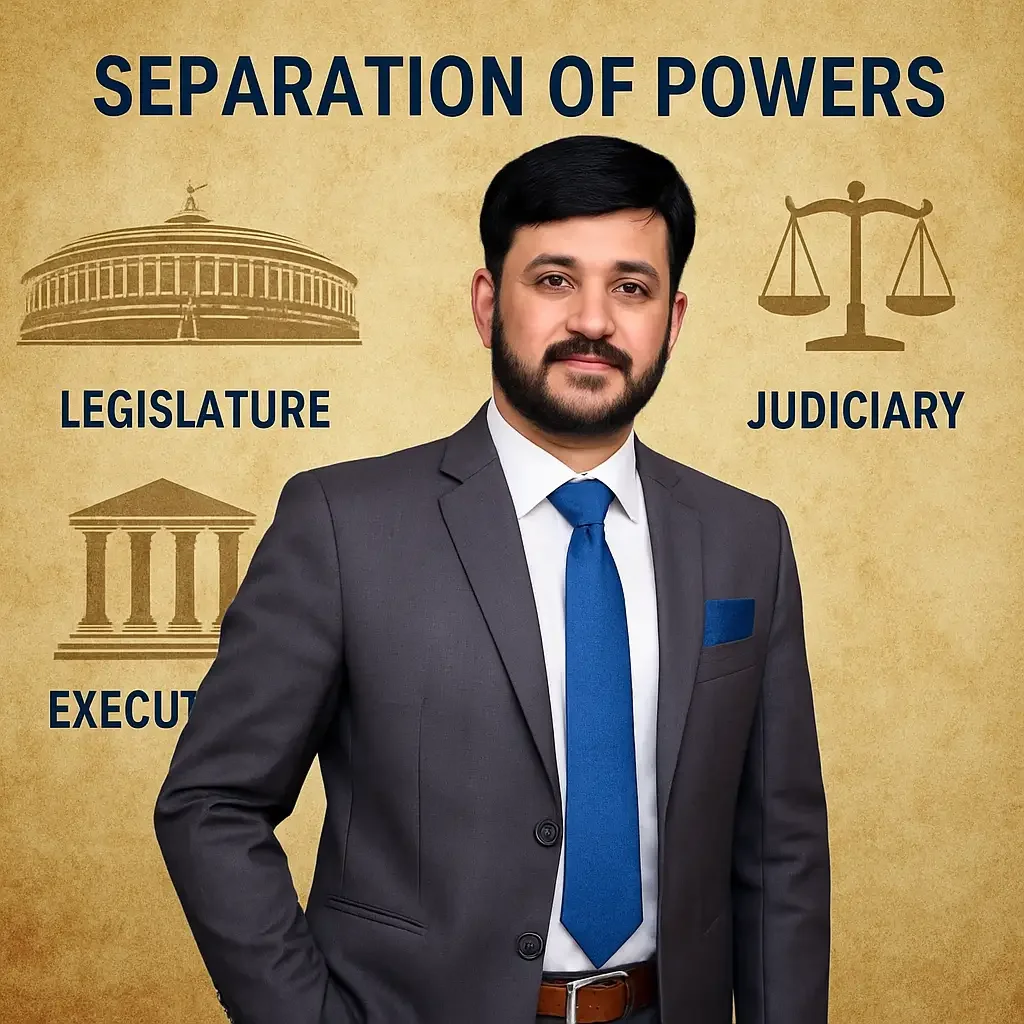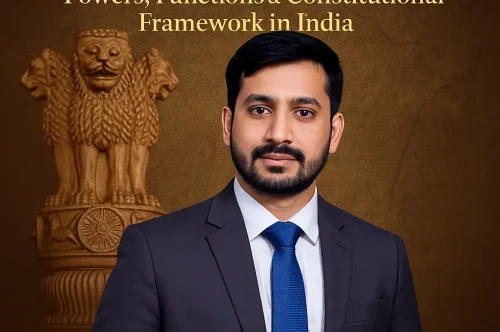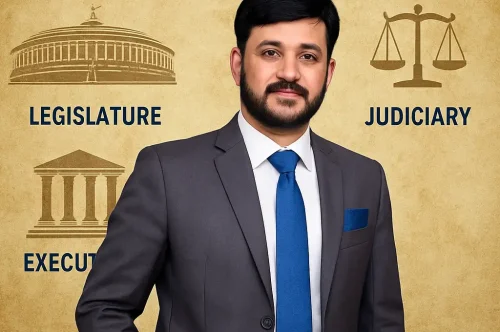Separation of Powers in India | Legislature, Executive & Judiciary

Separation of Powers & Constitutional Governance in India: Judicial, Executive & Legislative Balance
By Adv. Prakash Chand Sharma
Chartered Engineer | High Court Advocate | CAO
Founder – Zumosun Universe, Techlam Legal Solutions, JPSD Taxsun LLP
Powered by: TheLegalCourt.com | TheLegalBank.com
Introduction
The doctrine of Separation of Powers is a foundational principle of the Indian Constitution. It distributes authority among the Legislature, Executive, and Judiciary, ensuring that no organ becomes autocratic or exceeds its jurisdiction.
Although India does not follow a strict separation (like the US), it implements a functional and harmonious separation where each branch has distinct powers and checks on the others.
This principle is crucial in:
-
Judicial review
-
Administrative actions
-
Legislative competence
-
Policy implementation
-
Corporate governance
-
Public administration
-
Protection of constitutional rights
Understanding this doctrine is essential for clients, corporates, institutions, and legal professionals because it directly influences legal compliance, governance decisions, and public policy structure.
1. Legislature – Law Making Authority
The Legislature includes:
-
Parliament (Lok Sabha + Rajya Sabha)
-
State Legislative Assemblies & Councils
Key Powers:
-
Enact laws
-
Amend the Constitution
-
Scrutinize executive decisions
-
Control financial matters (budget, taxation)
-
Debate national policies
Practical Legal Relevance:
-
Determines compliance laws for businesses
-
Creates regulations affecting taxation, labour, environment
-
Impacts commercial contracts and governance frameworks
Limitations:
-
Cannot override Fundamental Rights
-
Subject to judicial review
-
Cannot encroach upon executive functions
2. Executive – Administration & Enforcement
The Executive includes:
-
President & Governors
-
Prime Minister, Chief Ministers, Ministers
-
Government departments, authorities, regulators
Key Powers:
-
Implement laws
-
Administer regulations
-
Issue notifications & guidelines
-
Handle public order, police, administration
-
Execute welfare schemes
Corporate & Administrative Relevance:
-
Licensing authorities
-
GST, Income Tax, ROC, RERA, SEBI, RBI, TRAI regulators
-
Municipal, district, and state officials
-
Labour, environment, and compliance departments
Limitations:
-
Must act within statutory limits
-
Cannot violate constitutional rights
-
Actions subject to judicial review
3. Judiciary – Interpretation & Protection
The Judiciary consists of:
-
Supreme Court of India
-
High Courts
-
District & subordinate courts
-
Tribunals & quasi-judicial bodies
Key Powers:
-
Judicial review (Article 13, 32, 226)
-
Review laws, executive functions
-
Protect constitutional rights
-
Interpret statutes
-
Punish for contempt
-
Ensure administrative fairness
Why Judiciary is Central to Governance:
Judicial independence ensures:
-
Rule of law
-
Accountability of government
-
Protection against arbitrariness
-
Enforcement of rights
Limitations:
-
Cannot encroach on law-making
-
Cannot govern or administer day-to-day executive functions
4. Interrelationship Between the Three Branches
India follows “Checks and Balances”, not complete separation.
Examples:
-
Legislature makes laws → Judiciary interprets laws
-
Executive administers laws → Judiciary reviews executive actions
-
Legislature controls executive via no-confidence motions
-
Judiciary uses guidelines for governance (e.g., environmental directives)
The Constitution ensures cooperation, not conflict, between the organs.
5. Judicial Review – The Ultimate Check (Articles 32, 226, 13)
Judicial review empowers courts to strike down:
-
Unconstitutional laws
-
Arbitrary executive actions
-
Policies violating Fundamental Rights
-
Rules/regulations exceeding statutory limits
Key Case: Kesavananda Bharati v. State of Kerala
Judicial review is part of the Basic Structure of the Constitution.
6. Separation of Powers in Corporate & Administrative Law
This doctrine affects businesses and institutions significantly.
✔ Corporate Compliance
Regulators (SEBI, RBI, MCA) must operate within statutory powers.
Judicial review helps businesses challenge:
-
Unfair penalties
-
Arbitrary regulatory actions
-
Unreasonable licensing rejections
✔ Administrative Law
Authorities must follow:
-
Natural justice
-
Due process
-
Reasonable decision-making
✔ Public Institutions
Universities, municipal bodies, and development authorities must act lawfully or face judicial intervention.
7. Constitutional Remedies & Protection
Citizens and businesses can challenge violations through:
-
Article 32 – Supreme Court (Fundamental Rights)
-
Article 226 – High Courts (FR + legal rights)
-
Writs: Habeas Corpus, Mandamus, Certiorari, Prohibition, Quo Warranto
These remedies reinforce the separation of powers by keeping government actions in check.
Conclusion
The doctrine of Separation of Powers ensures transparent governance, constitutional accountability, and protection of rights. It prevents misuse of authority, maintains balance between organs of the State, and strengthens India’s democratic framework.
For businesses, institutions, and individuals, understanding this doctrine is crucial to navigating regulatory challenges, administrative decisions, and legal compliance.
Author
Adv. Prakash Chand Sharma
Chartered Engineer | High Court Advocate | CAO
Founder – Zumosun Universe, Techlam Legal Solutions, JPSD Taxsun LLP
Powered by: TheLegalCourt.com | TheLegalBank.com






